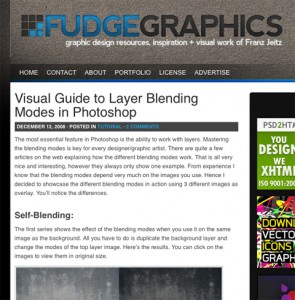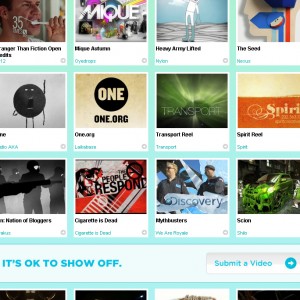Nice typography-based motion graphics design work
Flickermood 2.0 from Sebastian Lange on Vimeo.
You backup all the time, right?
Backups have always been a thing with computers, but data has been getting progressively larger over time, and for those of us doing digital media, it has gotten intensely large. Backups are a constant issue for me and when I read this article over at CDM, it made me think about it again.
There are some good suggestions there. I’ll summarize and add my own.
1. use multiple media when possible. I had a week-long studio session costing thousands of dollars. We had archived it to a hard drive which I had backed up to TWO sets of DVDs. I kept one set of the DVDs and I gave the other set to a band member. A year later, most of the data in both sets of the DVDs was unreadable. (I had verified all of the DVDs on a separate computer before putting them away). Luckily, I hadn’t needed the hard drive for anything else and I was able to back it up to another hard drive so that the session wasn’t lost completely. Now, for anything critical, I will archive to hard drive and DVD, and I will keep the tape as well whenever possible.
2. make multiple backups. I have some stuff that is the most important to me: Digital Family Photos and movies; personal records; business records; my media library (this is important because it took me 6 months to rip all my DVDs). All of these are backed up to multiple locations. The photos are backed up to a separate drive in my computer every night along with the (smaller) files. I have two full machine backup drives which I alternate between so that I always have at least two backups of my machine. I am investigating creating on-line backups of all the impossible to replace data as a third backup.
3. keep the data moving. Hard drive seize, DVDs get oxidized, web hosts go out of business. This one I got from CDM. Hard drives keep getting cheaper. This means that you can periodically buy a couple new drives and archive all the old data from the older smaller drives. This reduces the chance of a drive failure due to age and keeps the bits moving forward. Personally, I’ll also point out that it makes it less likely that you’ll end up with your data on a drive with an incompatible format or adapter (SCSI anyone?)
4. store your backups in multiple locations. I keep one set of backups at home and one set at work. Sure, it is a pain to have to bring drives back and forth, but it makes me feel a bit more secure that if the worst happens at home that I’ll still have my most important digital assets.
5. back up often. duh.
I’d love to hear any other suggestions. Especially around archiving large video projects…
No commentsGreat talk from Mario Klingemann on fun with Image Processing
I always appreciate people who can make math fun, especially image processing math. Tools like Pixel Bender or Processing are too intimidating for folks because of the “scary math.”
Andrew Glassner had a great talk at Siggraph a few years ago where he went through some of the material from his column in Computer Graphics. It not only made the math less intimidating, it was also inspiring! I saw Mario Klingemann give a great talk at Adobe MAX this year that also made math fun and inspiring. Luckily Adobe has been posting the talks from MAX on adobe.tv, so you can see it.
AdobeTV – Here Be Pixels by Mario Klingemann
No commentsFudgegraphics – Graphic Design Inspiration

fudgegraphics.com combines tutorials, portfolios and free downloads together. A great source for graphic designers or other visualists. As a side note, it is also a great promotional site for its creator Franz Jeitz as it is also a showcase for his skills and knowledge. For designers looking to promote their work beyond the standard portfolio site, there are some great ideas here.
Motionspire – Motion Graphics Inspiration
This site is great for checking out Motion Graphics portfolio pieces. It does what it says:

motionspire screenshot
Motionspire – Motion Graphics Inspiration
No commentsRED Scarlet and EPIC announced
RED has decided to take the lego approach, which is pretty exciting. You get to do a lot of mix and match for your application or budget. Take a look
No commentsScarlet… not the same. – Scarletuser.com
We have changed everything about Scarlet because the market has changed and we have discovered a lot of things in the process. We have a new vision.
Wipe you minds of the past announced Scarlet. Forget the design and forget the price. It is all different now. We think you will be surprised. Glad we didn’t take any deposits… 🙂
Scarlet… not the same. – Scarletuser.com.
Exciting! Wonder what the changes are and I hope they aren’t raising the price…
No commentsProLost: RED Addresses the “DSLR Market”
![]() Here I was getting all jazzed about the any-NAB-now DSLR from Red and then Stu Maschwitz throws a big cold shower on the whole thing… Good post though…
Here I was getting all jazzed about the any-NAB-now DSLR from Red and then Stu Maschwitz throws a big cold shower on the whole thing… Good post though…
No commentsProLost: RED Addresses the “DSLR Market”
RED is a lot like Apple entering the cell phone market. It takes an outsider to start over from scratch and shake up the assumptions that the staid players hold dear. But as an outsider it’s very difficult to just get the basics right.
upgraded to new version of word press
sorry if there is some weirdness on the pages for a little while. For starters, it looks like I lost all my categories…
update:
Fixed things up, I hope. Let me know if you see any weirdness.
New NASA images archive
Great space images for your comps or projects. From their terms of use
No commentsThe NASA imagery offered on NASAIMAGES.ORG is generally not copyrighted. You may use this NASA imagery for educational or informational purposes, including photo collections, textbooks, public exhibits and Internet Web pages (personal or otherwise). This general permission does not extend to any use of the NASA insignia logo (the blue “meatball” insignia), the retired NASA logotype (the red “worm” logo) and the NASA seal (the “NASA Properties”) whether or not used in conjunction with images obtained from NASAIMAGES.ORG. Notwithstanding the foregoing restriction, you may use the NASA name and the NASA initials only as indicators of the original source of the NASA imagery.
If the NASA images obtained from NASAIMAGES.ORG are used for commercial purposes (including advertisements or packaging), such use may not suggest, either explicitly or implicitly, that NASA endorses any commercial goods or services.